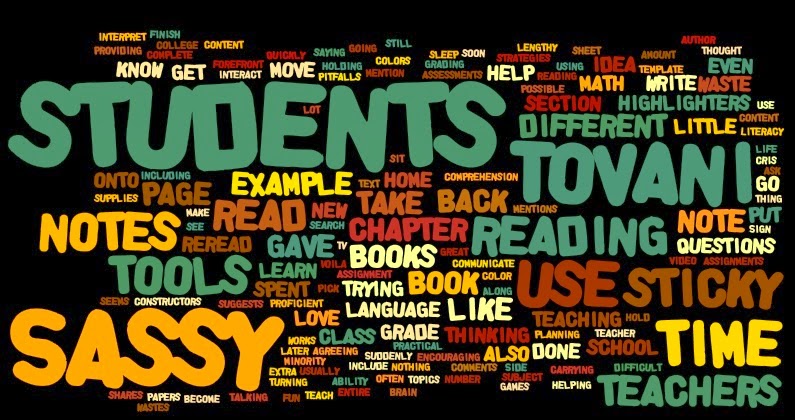If you're like me, you sometimes will read an entire page (or chapter) and then realize that you have absolutely no idea what you just read. So then you have to go back and read the whole thing over again which wastes even more time. Generally, when students are reading for school, they are trying to get it done as quickly as possible so that they can move on to TV or video games. For me, I'm usually trying to finish so that I can go to sleep. (College life.) So, this extra time spent going back to reread a section of a book seems like a complete waste. Often, students will not even take the time to reread the section because of that waste of time. So how do we combat this? Use their time to get the most out of their reading so that they can move on to more fun things?
Cris Tovani, author of Do I Really Have to Teach Reading?, suggests a few different tools that teachers can use to help students hold onto their thinking so that they can use it later in class or on assignments. Some of the tools she lists include using highlighters and sticky notes. (Side note: I am probably in the minority, but there's nothing that I love more than new school supplies in all different colors. So the thought of new sticky notes and highlighters that color coordinate with topics? Sign me up.) Along with those tools, Tovani also mentions different worksheets that she gives her students called "Comprehension Constructors" and includes a blank template in the back of the book for other teachers' use.
As I was reading this chapter, I found myself agreeing with a lot of what Tovani was saying about holding students' thinking while reading, but still having some questions. For example, I know that I've said in the past how I love math and plan on teaching it soon. How can I take the tools that Tovani is providing me with and apply them to a math class? She gave one example in this chapter, but I'd like to sit down with her and pick her brain on this idea.
I also really loved that Tovani gave some very practical tools for teachers to use. As I learn more and more about teaching, grading comes more to the forefront of my mind when planning assessments. Tovani spent a lengthy amount of time talking about helping her students learn to use sticky notes in books when reading to ask questions, make comments, and communicate with the text which is all great! But then how do teachers know that students have done that assignment? It's incredibly difficult to take home all of the books to grade, but Tovani gave an example of how to help out with that problem. She has her students write the page number of the book that the students put the sticky note on the note, and then the students put all of their sticky notes onto a sheet of paper. Voila! Suddenly a teacher goes from carrying home 150 books, to a folder full of papers to grade. Not to mention the lack of page turning to search for the notes.
I appreciate how Tovani writes. She is engaging and shares her struggles and pitfalls. It is encouraging to see how she works with students and little by little helps them to become more proficient readers.
"Content Literacy - the ability of someone to interact with and use strategies to interpret the content of some subject (in its own language) including being able to speak, listen to, read, and write in that language"
{Sassy}


